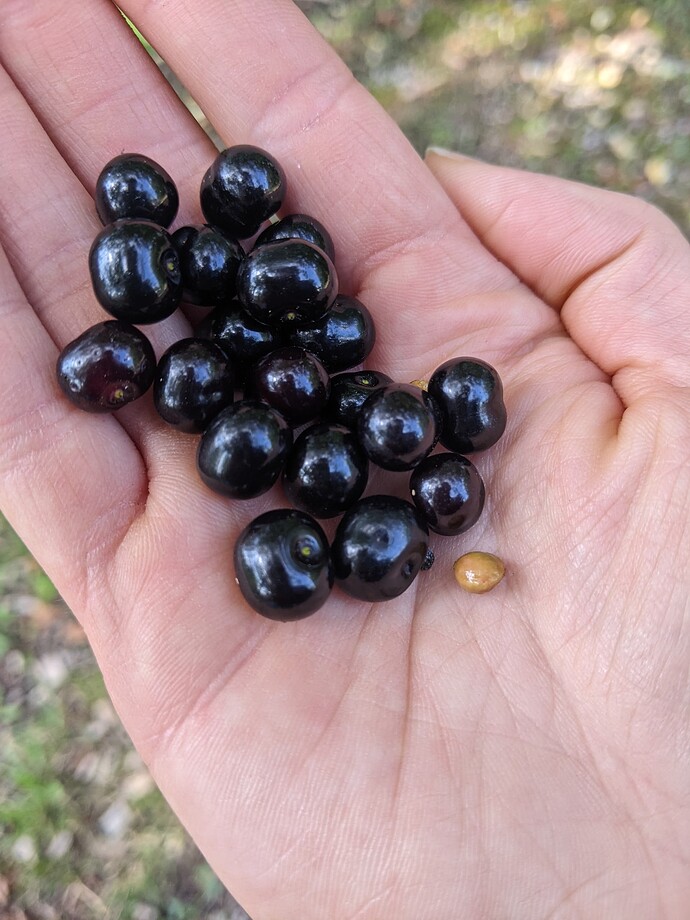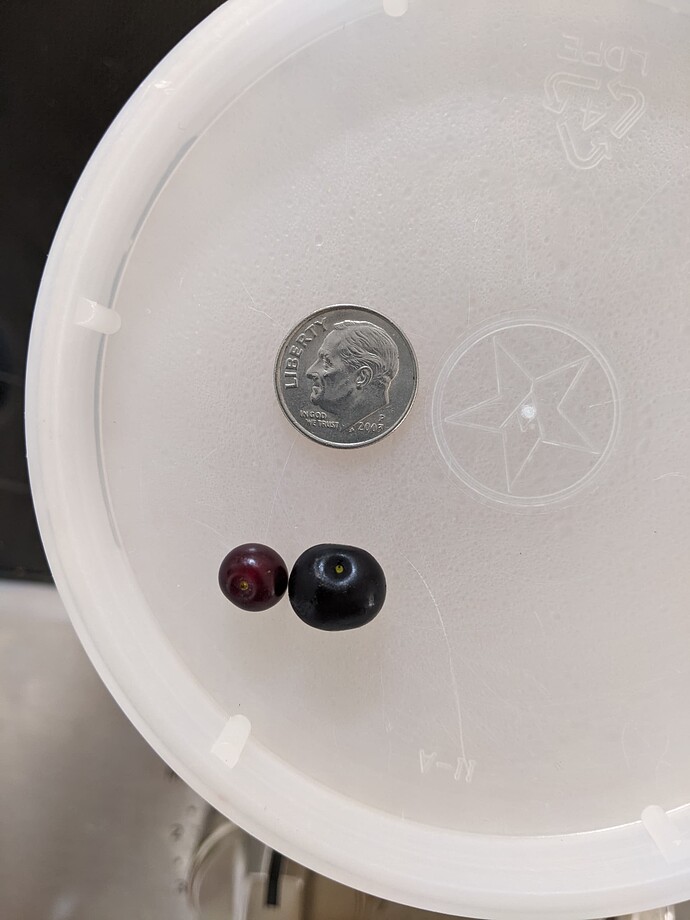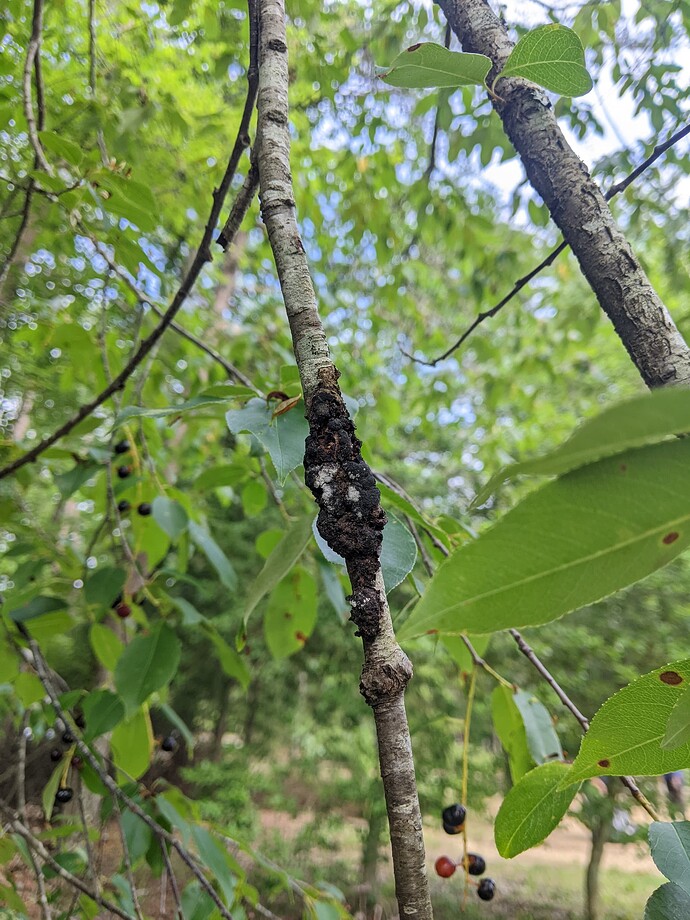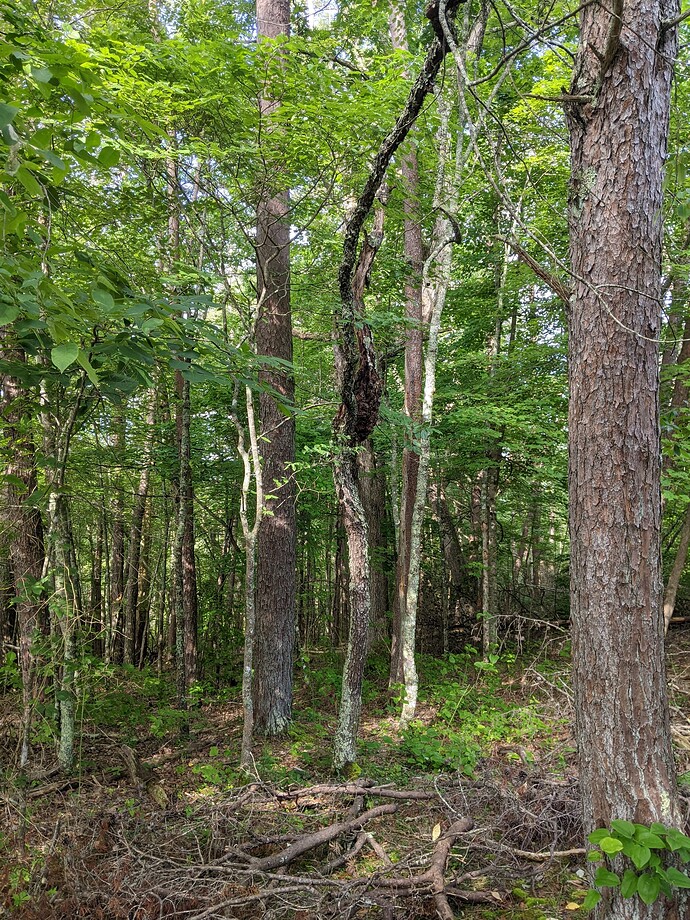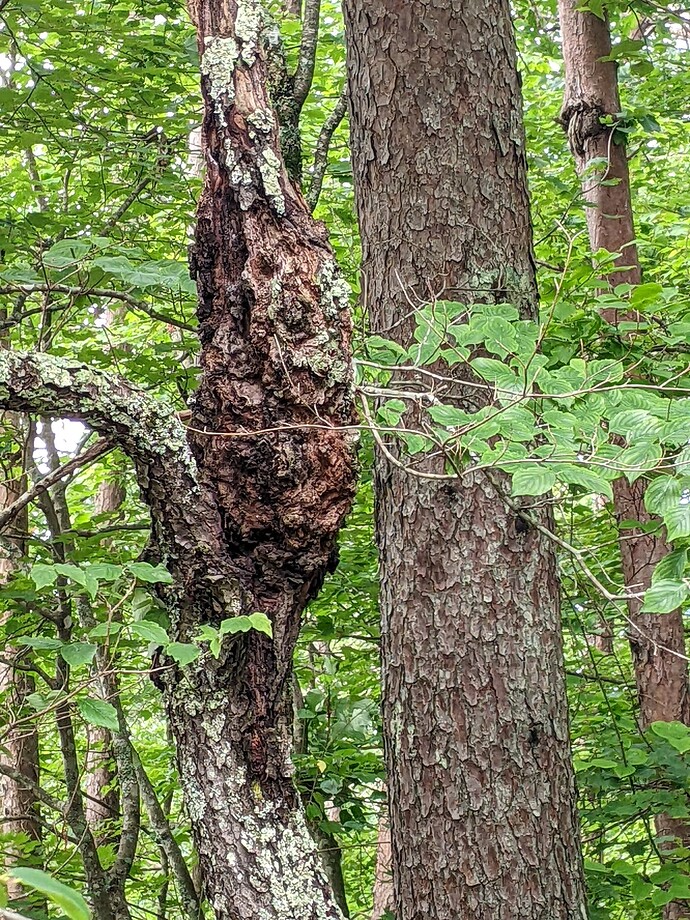The best black cherries I have collected and eaten were from a group of small trees located on the Bayside of Cape Henlopen in delaware, right near the lighthouse. I happened to be down there when the cherries were ripe, and they were plentiful and delicious if you like black cherries. I recall that the cherries were larger than what I usually see here in Southeastern pennsylvania, but this could have been due to the fact that those cherries were fairly well watered though growing in sand and the water they were beside was salty! I wonder if it might be worthwhile to collect seeds from those trees to grow here in my yard. Would they grow tall, or retain the smaller stature of their parents? How large and tasty would their fruit be? I might have to collect some seed this summer.
If any of you have (or have seen) Sam Thayer’s foraging books, they’re excellent. Very dense, full of pictures, vivid descriptions from someone who has obviously put the time in.
His book “The Forager’s Harvest” has a section on chokecherries and one on pin cherries. He says the fruit of pin cherry is typically .3” (8mm) diameter, which is about what I’ve observed.
It’s definitely a small tree, though very fast growing, and not well adapted to shade. It’s very often the first tree to spring up after logging around here, and can be 10’ tall in a few years’ time.
The most defining trait, I’d say, is the leaves. They’re quite elongated compared to other cherries. I guess you’d call it lanceolate. The first year wood and petioles are all bright red, too. The trunk is covered with lenticles. I do t think I’ve ever seen one much over 4” DBH and 25’ tall.
A couple of summers ago, we biked around the Champlain Islands. There are a few orchards in that area growing, among other things, lots of pie cherries. Being on the east side of the Lake, I’m sure they get some of the classic lake effect climate that cherries seem to really enjoy. So cherries have been grown there quite a bit over the years. I noticed quite a few large naturalized trees that could have easily been mistaken for wild, but bearing fruit very similar in appearance to the ones in the orchard. I’d strongly suspect these ‘wild’ cherries being discussed to be similarly escaped.
My most noteworthy truly wild cherry find is these two chokecherries found growing on a causeway/mill pond dam adjacent to the Kennebec River in Maine. The fact that they were growing nearby each other would seem to suggest site vs genetics, but there were a bunch of others along that strip with typical chokecherry fruits. I thought perhaps access to water might be a factor- there’s obviously plenty of it there for the roots to drink from year- round, and the crowns are above the water ~5 or 6 ft. Also, it’s brackish on the river side, fresh on the mill pond side. Anyway, I was impressed by the size of the fruit, which is maybe 30-40% larger than a typical chokecherry based on my observations anyway. They tasted pretty good too. Puckery finish, but plenty of sugar and richness despite some tannin. I tore a couple pieces of each out of the ground. No real roots, but some root tissue. They seem to be alive still in the pot O have the in, so I’ll see if they make similar fruits here:
So now I’m very seriously thinking the Cape Henlopen cherries were CHOKECHERRIES, not black cherries. It just didn’t occur to me to critically assess the trees, but your photos of the fruit and the size of the trees (and the brackish water) all match with the Henlopen trees. Now I’m even more curious to visit them again!
This UNH extension paper about pin cherry is a great read too. Lots of good info there
https://extension.unh.edu/blog/2018/03/pin-cherries-pioneer-species-prevails
There are odd ones that randomly manage to grow in the woods and get pretty sizable. Check out the NH state champ!
You definitely WILL see black cherry growing on the shore too, often in secondary dunes. It’s usual super stunted from the wind, salt, and lack of fertility, IME. Chokecherry seems much more on the riparian end of things, 5
though it definitely doesn’t mind growing in gravel and garbage soil. but I don’t think I’ve ever seen one on a dune. I’ve also never seen one make trunk much over 2”, since they clump so much. It’d be interesting to see how your finds compare.
It does seem like there’s a lot of potential in these species. They’re comparatively good eating as is. Older literature seems to reference sweet forms of black cherry, also called rum cherry in some of these older sources. It sounds like some places DO have less tannic ones based on people’s comments. They have a very rich flavor here but are heavy on the amygdalin and tannin for the most part. And chokecherry seems to have been a favorite for jelly over the years. Maybe there’s a really nice one out there waiting to be found.
One other thing I noticed about the two I found on that mill pond dam, which was really the side of the rd, above the dam- ie growing in rip rap and crushed stone above the poured concrete spillway- The fruit was larger and plumper, but also had proportionally larger seeds. So the extra flesh wasn’t quite as much as might be suggested by looking at the fruit.
I think there is some potential in the native cherries for sure. The biggest thing in the way when it comes to prunus virginiana (chokecherry) and prunus serotina (black cherry) in my area is black knot fungus. It doesn’t allow many trees to mature. But, I have discovered one work around that I have tested on serotina with success, which is to coppice it. This rids the tree of black knot and reinvigorates it, allowing it to put out several healthy strong fruiting shoots right at perfect picking level. I think growing them in a thickly planted hedgerow and doing it on a rotational basis every 5-10 years would allow for a pretty good no spray control method.
I have had my first experience with prunus pensylvanica (pin cherry) fruit recently and this tree doesn’t seem to be as susceptible to the black knot. The fruit reminded me of a sour pie cherry taste. Really not bad at all, could see it in a jelly without any further breeding efforts. I have saved a bunch of seed of this to plant in my nursery this fall. Anyone planning on doing the same should note it needs a warm-cold stratification as it is an early summer ripener (this is another plus, extends the native cherry harvest). Don’t just go throwing it in the fridge without the warm strat first!
Here are a few pics of the pensylvanica:
Also as far as known selections, ken at oikos tree crops has 2 selections of note. One is a yellow fruited less astringent virginiana and the second is a non astringent “sweet” serotina named “Sweeta” supposedly good enough for eating out of hand.
Want to send me the coordinates so I can grab some
propogules for the nursery? Looks promising.
Interesting, those are way larger than the chokecherries we have in the west. There’s tons in my area and they produce a lot of fruit but seem to be uniformly inedible. I keep trying and it’s always the same, no matter how ripe they get. Taste terrible and completely dry out your mouth. All my plant guides say they were a staple food for the local first nations. I think that was a prank they played on European settlers. Like “yeah white man, we eat them all the time. They’re really good, ha ha.”
PM me your phone number, and I can drop you a pin. Theyre in Phippsburg
They definitely vary in flavor here. The darker ones are more consistently tastier, Ive noticed, though not always. Usually they are quite puckery at first, but if left to hang they sweeten up well, with just a twinge of tannin at the end. Like anything else, there are probably different landraces, plus soil fertility and moisture play some role Im sure
These are the ones we have here (my great grandmother called them “Choke cherries”). These fell from a tree that’s like 35’ tall in a neighbor’s yard I didn’t realize was there until I saw them accumulating on my rhubarb’s leaves. Sour, astringent/bitter, but definitely that strong sour cherry taste I see in store bought jams in the background.
I’m curious about using them as rootstock. I haven’t seen any black knot on them here (SE PA), which could just be luck/coincidence.
that’d be serotina - black cherry- rather than virginiana - choke cherry. Theyre pretty puckery, but do have an interesting flavor. Somewhere out there are reputedly sweet non-tannic and also large fruited ones, though Ive yet to find one.
I forgot to ask if you had either of these.
I checked the Phippsburg trees out breifly. At 20 mph, they had no visible fruit ripening. It seemed as though some might have been cut, too. I remember there being several more along that dam causeway, though I didn’t really make anything but mental note of the details. The couple of chunks I grubbed out are growing nicely in a pot though
Thanks for the Intel. I do not have either of those selections. Have just seen them on kens Instagram account unfortunately. Would love to have them though.
I recently found a Prunus serotina whose fruit was quite tasty out of hand. I ate 100 or so of them in one sitting to extract the seeds. Every one was free of worms, which might be typical for the species for all I know.
Here’s a photo of fruit from a P. serotina on my property (left) and the P. serotina i mentioned above (right).
Seed comparison
The tree did have several diseases (black knot among them). When I grow out these seeds, I’ll try the coppicing that @Everett suggested.
Would anyone like some seeds from this tree? I have way more than I need.











